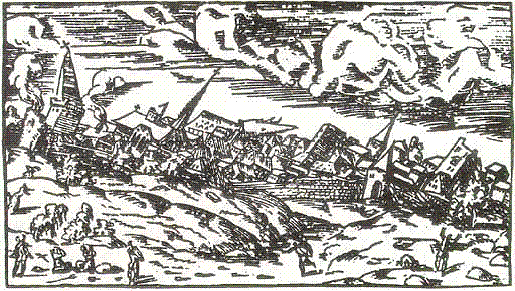 |
| Boethius (left, with numbers from India) debating Pythagoras (right, with an abacus) while Arithmetic looks on |
Anicius Manlius Severinus Boethius was born about 480 to a prominent family that had produced a couple emperors; his father became a Roman consul in 487 but died shortly thereafter, leaving Boethius to be adopted by the aristocrat and historian Symmachus. Symmachus and Boethius were fluent in Greek, which might have figured into their execution—but we are getting ahead of ourselves.
Boethius went to work for Theodoric the Great, and some of his actions on behalf of the King of the Ostrogoths have survived in the records.
- Procuring or producing a waterclock for Theodoric to give to Gundabad of the Burgundians.
- Finding a lyre player to perform for King Clovis.
- Investigating irregularities in Theodoric's paymaster.
Boethius did so well in his career that he was made magister officiorum ["master of duties"], responsible for overseeing all government services. That's probably where the trouble started. Kings and emperors can be mistrustful of those around them with too much power—even if the emperor gave him the power in the first place. Boethius was put in charge of reconciling the differences that had grown up between the Western Roman and Eastern Byzantine Empires. His political powers and education and ability to speak Greek (rare in the West) made him ideally suited for this. He was accused (falsely) of treasonous dealings with the Eastern Emperor Justin I against Theodoric. For this he was exiled, then executed. His adoptive father Symmachus was later put to death on the charge of collusion with Boethius to overthrow Theodoric—a charge which seems unlikely.
He was executed in 525, but his writings survived. He wrote many books, including translations of Aristotle's works on logic; Boethius' translations were the only access to Aristotle's logic available to western Europe until the 12th century. He also produced De arithmetica on the four uses of arithmetic: arithmetic, geometry, music, and astronomy.*
The Consolation of Philosophy is believed to have been written while he was in exile. It covers many topics, one of which gave the modern era the title of one of its most popular game shows. But that's a story for tomorrow.
*These are the four parts of the quadrivium, taught in medieval universities; it is likely that the curriculum was arranged thus because of Boethius.

































